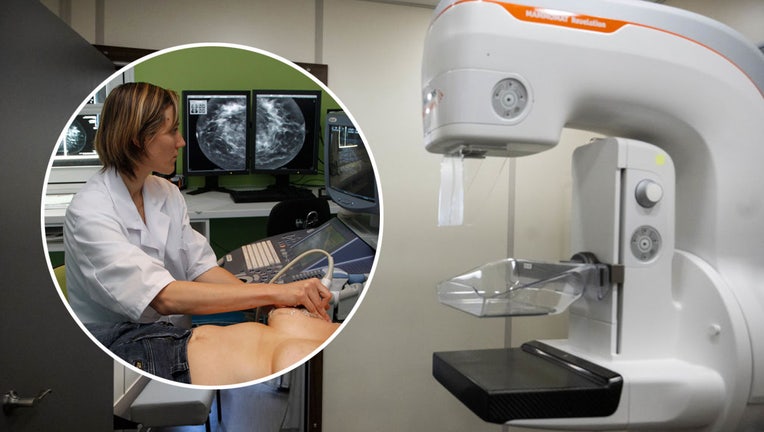Nearly 200 chemicals linked to breast cancer could be exposed to people’s food: Study

FILE - A mammography machine is seen in the background as a doctor screens a woman for breast cancer. (Sarah Reingewirtz/MediaNews Group/Los Angeles Daily News/ BSIP/UIG Via Getty Images)
Researchers have identified 189 potential and confirmed carcinogens in food materials found in grocery stores and markets that could lead to breast cancer.
Food tested from around the world
A recent peer-reviewed study conducted by researchers from the Food Packaging Forum found that chemicals in food packing materials including plastic and paper or board had evidence of breast carcinogens.
Researchers purchased food in markets in the last few years from around the world, including Brazil, Canada, China, Ghana, Egypt, Austria, Denmark, Germany, Greece, Hungary, Poland, Spain, India, Iran, Malaysia, Mexico, Nigeria, Turkey and the United States.
The food came from markets that are in highly regulated regions, and this study highlights the gaps in regulatory guidelines, researchers claimed.
With the data that was gathered, researchers said there is evidence that people could be regularly exposed to 76 different types of breast carcinogens from food products and packaging, 80% of which were from plastics.
"Our findings imply that chronic exposure of the entire population to suspected mammary carcinogens from FCMs (food contact materials) is the norm and highlights an important, but currently underappreciated, opportunity for prevention," the authors explained.
Further studies into other chemicals that could be linked to breast cancer were encouraged by researchers.
"Together, we provide a springboard for a wide range of actions that could improve our understanding of BC etiology and our ability to prevent the leading cause of cancer death among women worldwide," authors said.
In a separate study from earlier this month, researchers in Switzerland analyzed more than 14,000 known food contact chemicals (FCCs) and prioritized the chemicals that have been frequently detected in food contact materials. Then the team mapped the available evidence for their presence in humans.
Researchers found evidence of 3,601 FCCs present in humans, with 1,800 of the FCCs coming directly from food packaging items.
This means, of the 14,000 FCCs analyzed, 25% of those chemicals were found present in humans.
Among the FCCs detected in humans were several carcinogens, such as formaldehyde and cadmium. Dozens of FCCs were also mutagens, which means they contained chemicals such as lead and cobalt. Many more exhibited specific target organ toxicity after repeated exposure.
Breast cancer is 2nd most common cancer in the world
Breast cancer is the second most common cancer in the world and the No. 1 cancer diagnosis in women, according to the World Cancer Research Fund.
There were over 2.2 million new cases of breast cancer in 2022 among women with over 274,000 of those cases being in the United States.
In 2024, it is predicted that over 310,000 women and 2,800 men will be diagnosed with an invasive type of breast cancer, according to BreastCancer.org.

